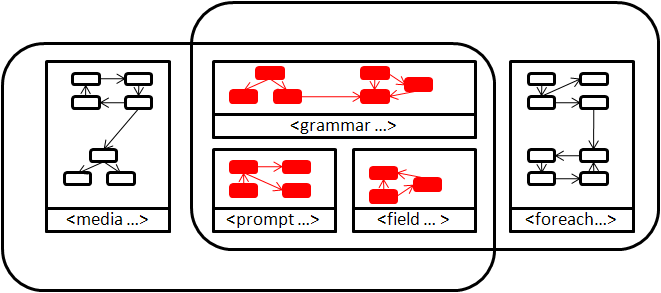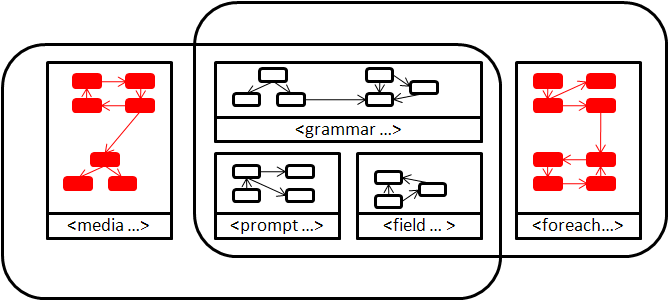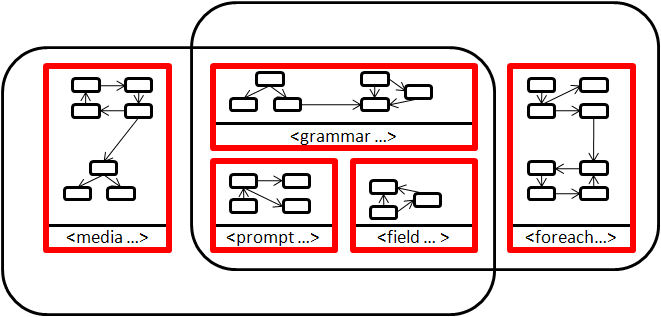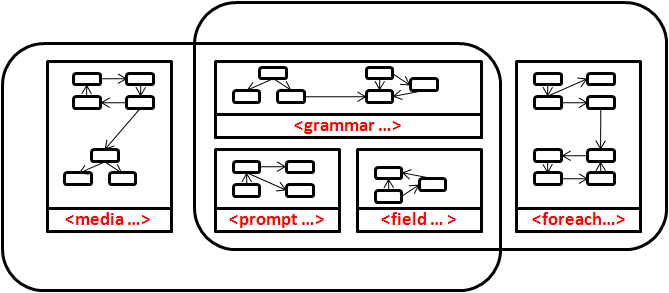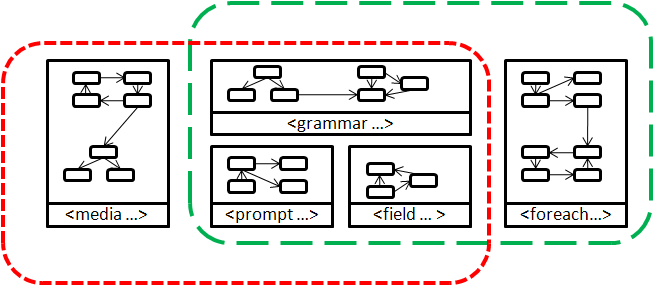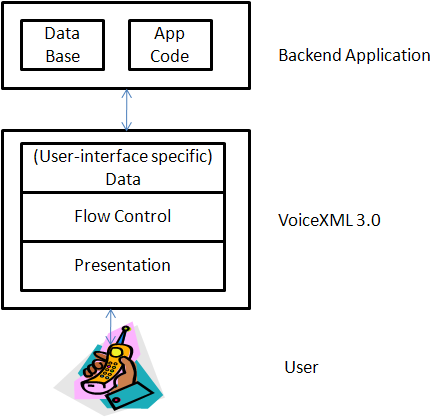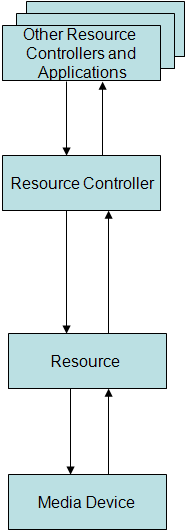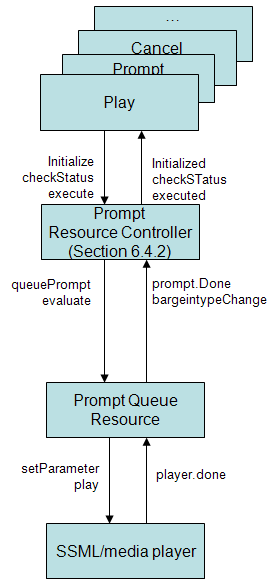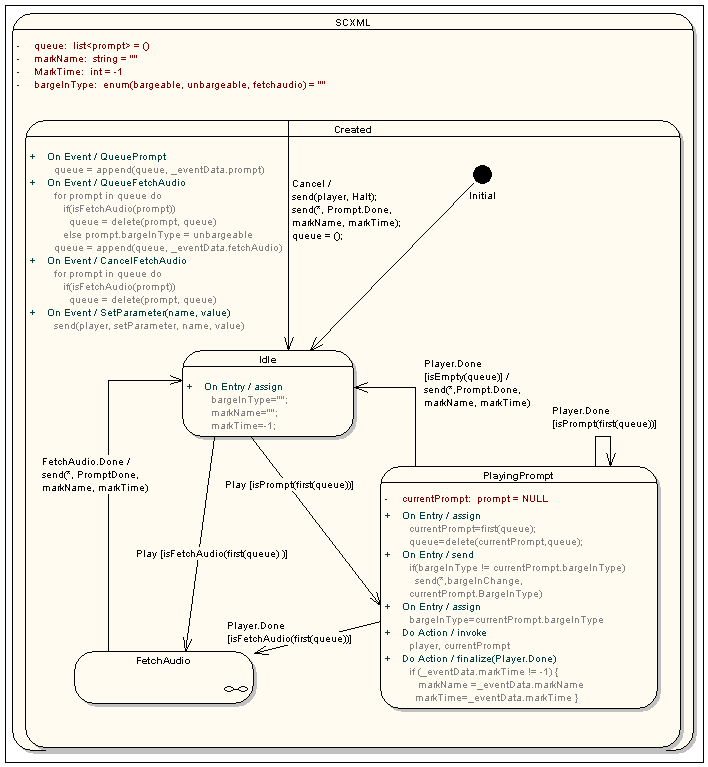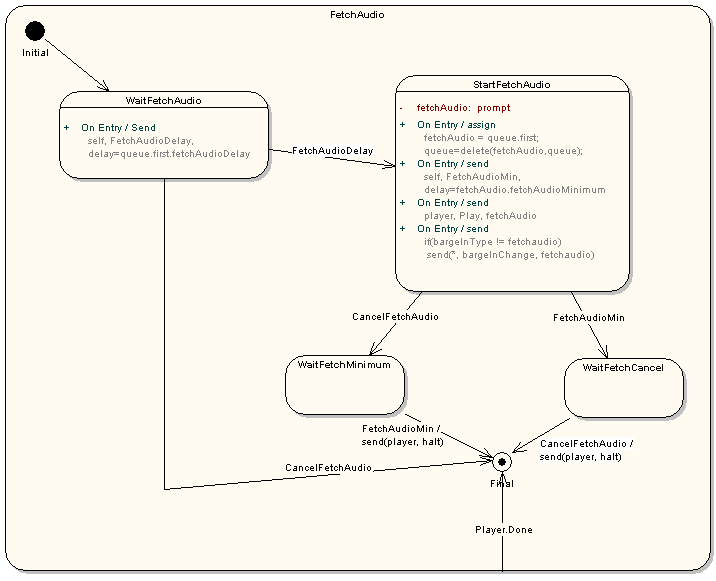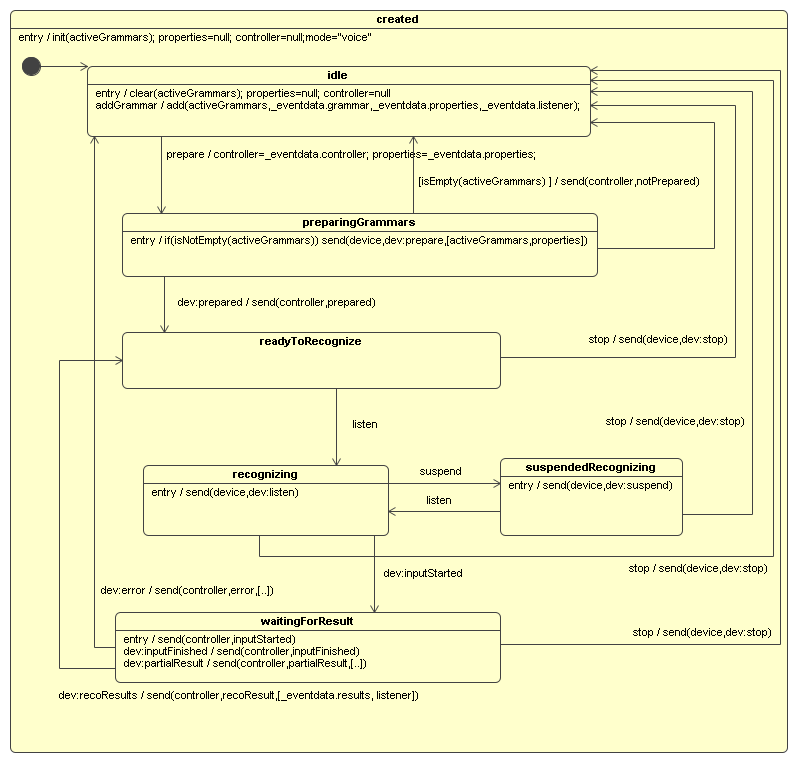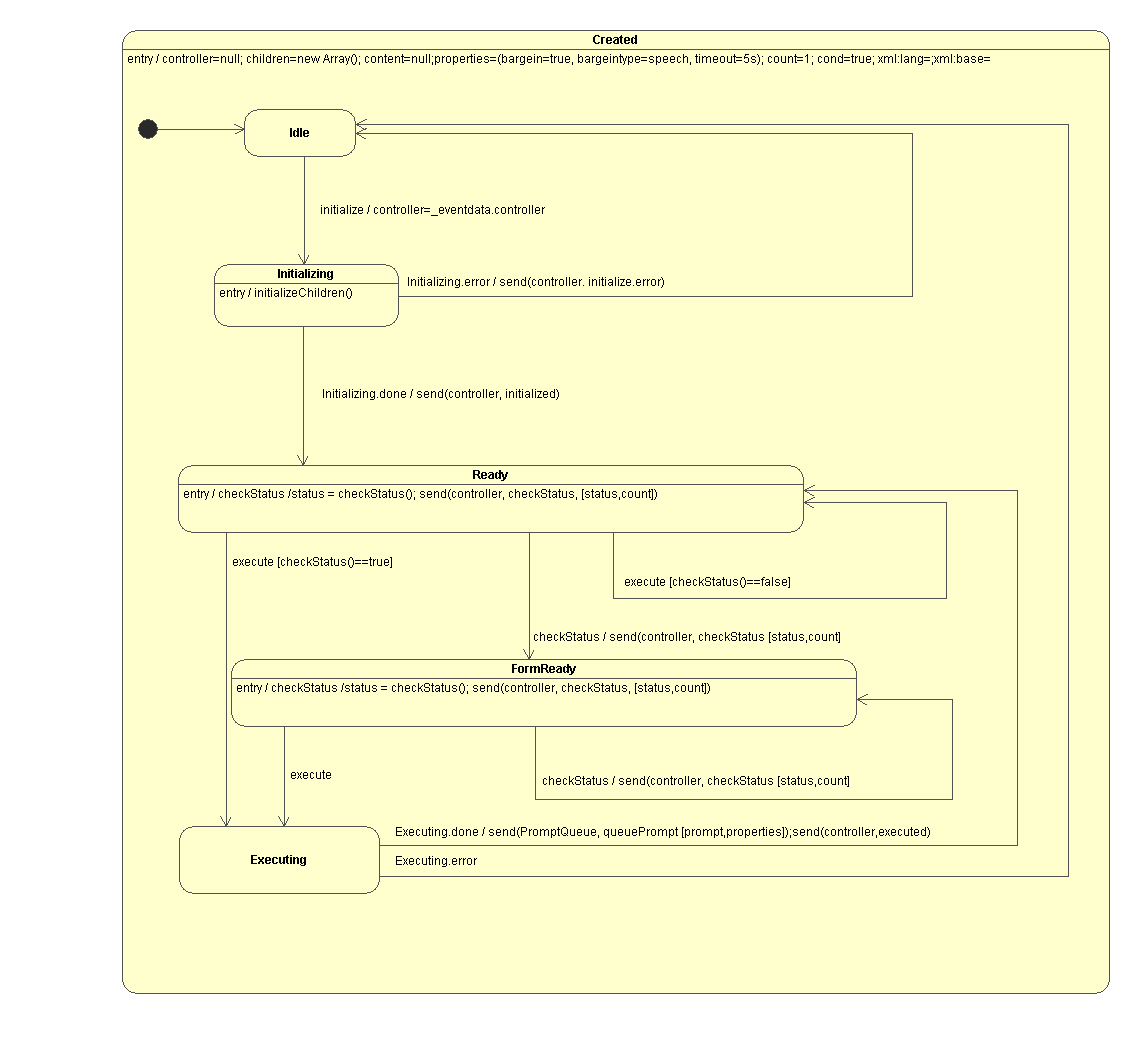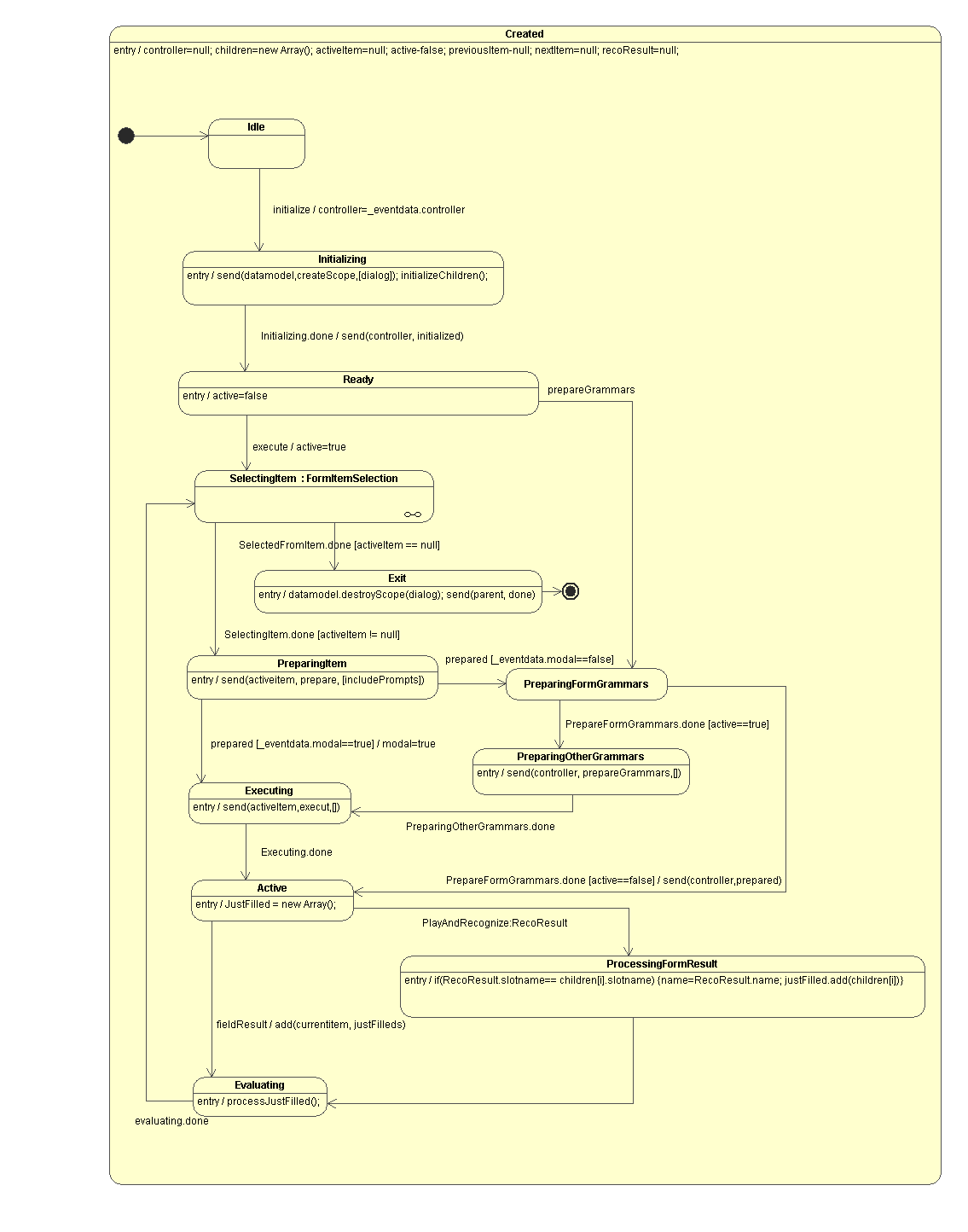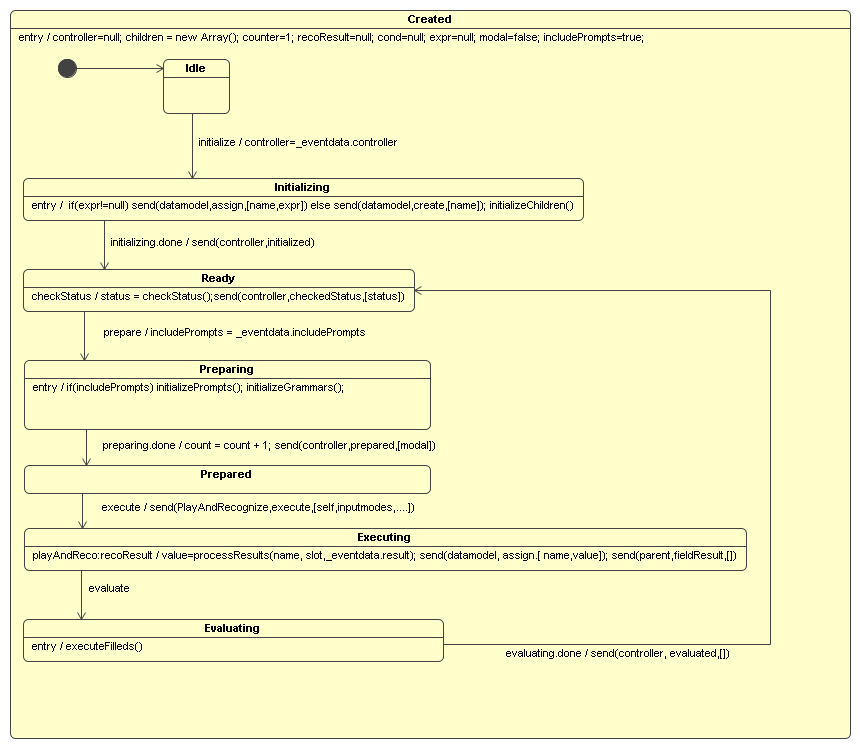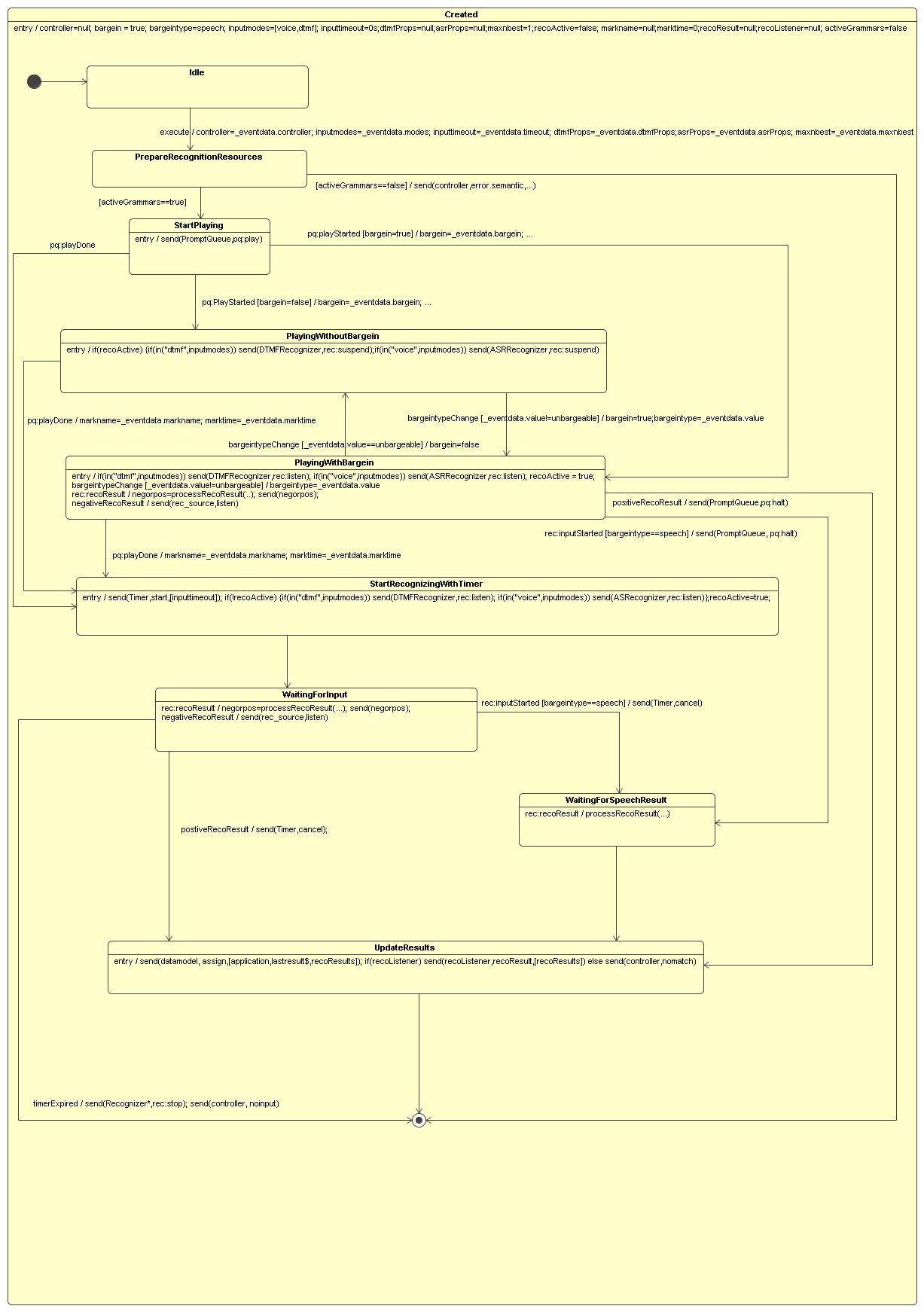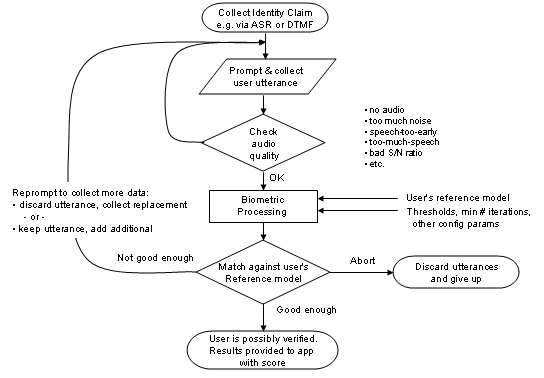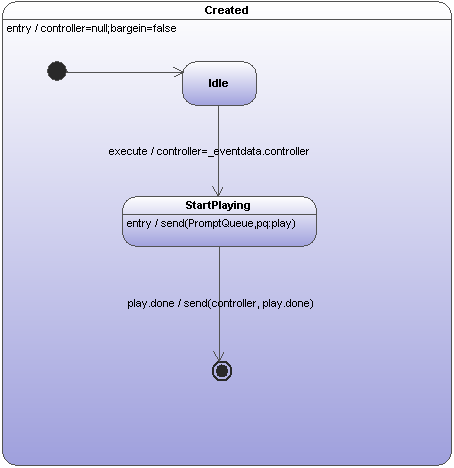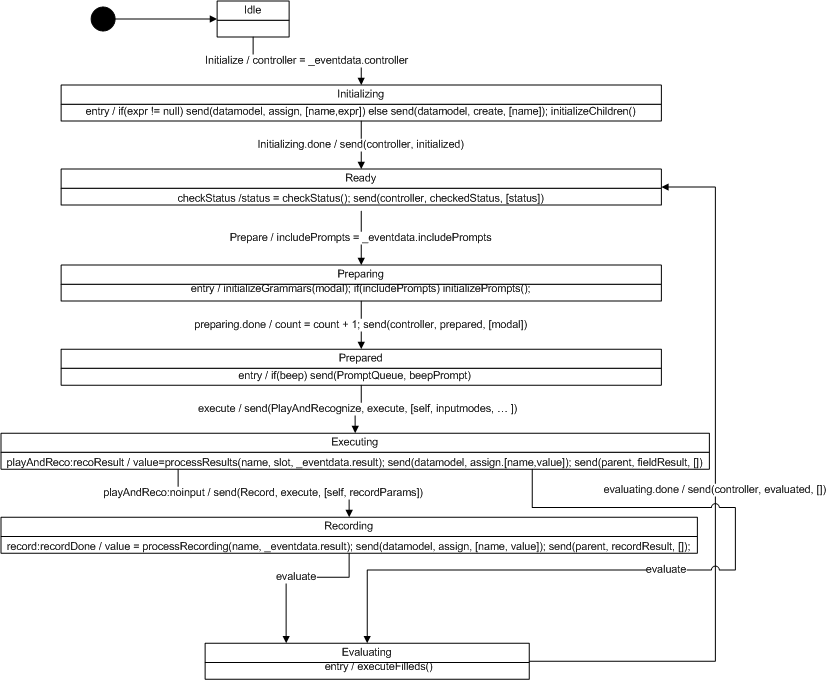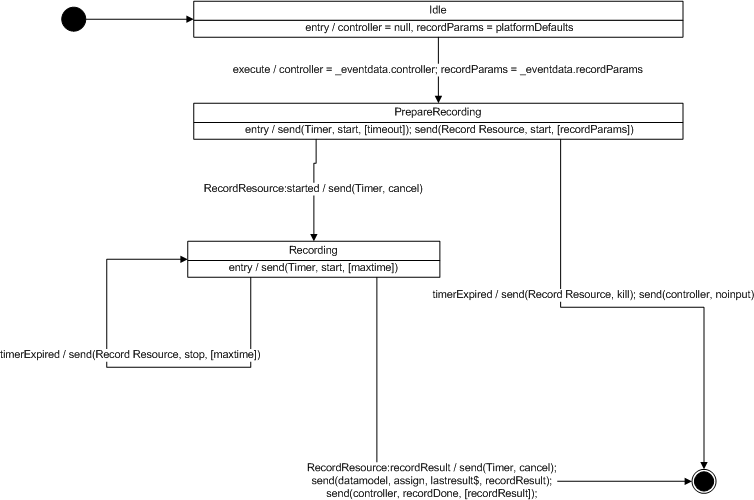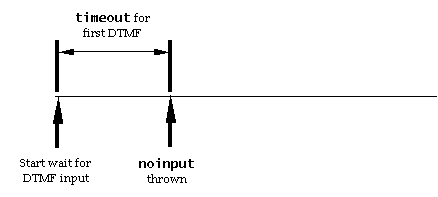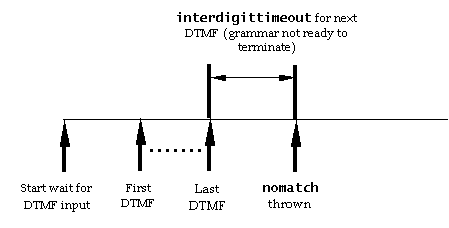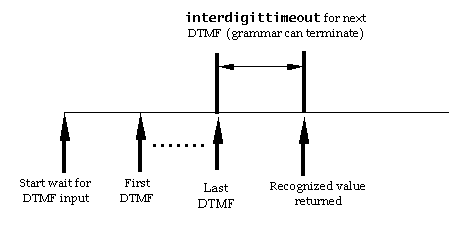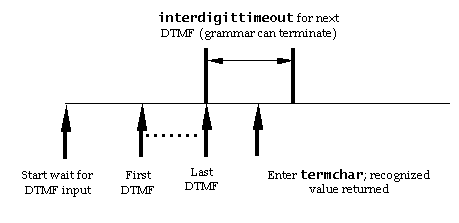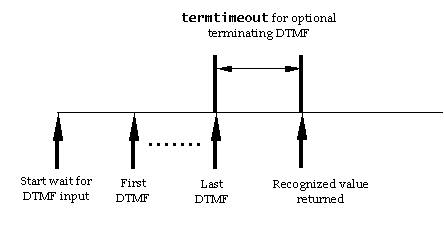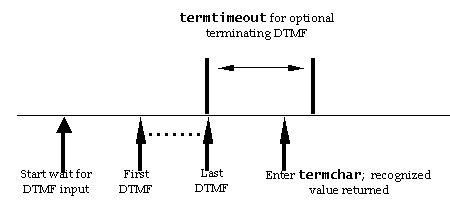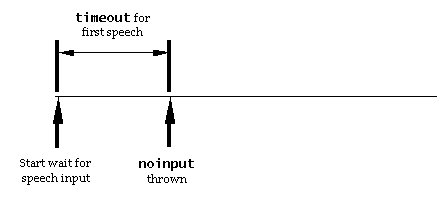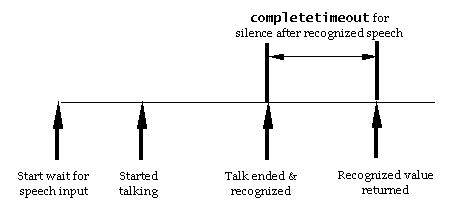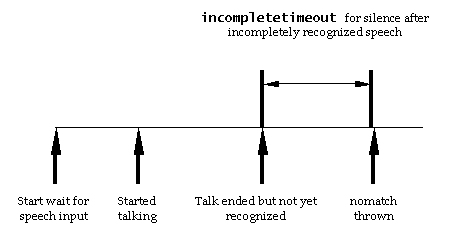The form RC is defined in terms of a data model and state
model.
The data model is composed of the following parameters:
- controller: the RC controlling this form RC
- children: array of children's (primary) RC
- activeItem: current form item being executed
- active: Boolean indicating whether this form is active.
Default: false.
- justFilled: array of child RC which have just been filled
- recoResult: The recognition result of the previously executed
form item.
- previousItem: The previous form item already executed.
- nextItem: The next form item which is presently scheduled for
executed.
- modal: The modality of the current form item being
executed.
- id: The form identifier.
The form RC's state model consists of the following states:
Idle, Initializing, Ready, SelectingItem, PreparingItem,
PreparingFormGrammars, PreparingOtherGrammars, Executing, Active,
ProcessingFormResult, Evaluating and Exit.
In the Idle state, the form RC can receive an 'initialize' event
whose 'controller' event data is used to update the data model. The
RC then transitions into Initiating state.
In the Initializing state, the RC creates a dialog scope in the
Datamodel Resource and then initializes its children: this is
modeled as a separate RC. When all children are initialized, the RC
sends an 'initialized' event to its controller and transitions to
the Ready state.
In the Ready state, the form RC sets its active status to false.
It can receive one of two events: 'prepareGrammars' or ‘execute’.
‘prepareGrammars’ indicates that another form is active, but this
form's form-level grammars may be activated; an 'execute' event
indicates that this form is active. If the RC receives a
'prepareGrammars' event, it transitions to the
PreparingFormGrammars state. If the RC receives an 'execute' event,
it sets its active data to true and transitions to the
'SelectingItem' state.
In the SelectingItem state, the RC determines which form item to
select as the active item. This is defined by a FormItemSelection
RC which iterates over the children sending each a 'checkStatus'
event. If a child returns a true status (indicating that it ready
for execution)), the activeItem is set to this child RC and the RC
transitions to the PreparingItem state. If no child returns this
status, then the RC is complete and transitions the Exit State.
In the PreparingItem state, the activeItem is sent a 'prepare'
event causing it to prepare itself; for example, the field RC
prepares its prompts and grammars for execution. When the
activeItem returns a 'prepared' event, the event data indicates
whether the item is modal or not. If the item is modal, then the
form RC transitions to the Executing state. If the item is not
modal (other grammars can be activated), then the form RC
transitions to the PreparingFormGrammars state.
In the PreparingFormGrammars state, the RC prepares form-level
grammars. This is defined by a separate RC which iterates through
and executes grammar children. When this is complete, the RC
transitions to the Active state if the form is not active (active
data), and transitions to the PreparingOtherGrammars if the form is
active.
In the PreparingOtherGrammars states, the RC sends a
'prepareGrammars' event to its controller RC (which in turn sends
the event to appropriate form, document and application level RCs
with grammars). When its receives a 'prepared' from its controller,
the RC transitions to the Executing state.
In the Executing state, the form RC sends an 'execute' event to
the active form item. If the form item is a field, then this will
causes prompts to be played and recognition to take place. The RC
then transitions to the Active state awaiting a result.
In the Active state, the RC re-initializes the justFilled data
to a new array and waits for a recognition results (as active or
non-active form), or for a signal from its selected form item that
it has received the recognition result. Recognition results are
divided into two types: form item level results, received and
processed by the form item; and form level results which are
received by the form RC which caused the grammar to be added. If a
'recoResult' event is received by the form RC, the RC transitions
into the ProcessingFormResult state. If the active form item
receives the recognition result (and locally updated itself), then
the form RC receives a 'formItemResult' event, adds the active item
to the justFilled array, and transitions into the Evaluating
state.
In the ProcessingFormResult state, the recognition result is
processed by iterating through the form item children, obtaining
their name and slotname, and then attempting to match the slotname
to the results. If the match is successful, the name variable in
the data model result is updated with the value from the
recognition result and the child is added to the justFilled data
array. When this process is complete, the form RC transitions to
the Evaluating state.
In the Evaluating state, the form RC then iterates through its
children and if a child is a member of the 'JustFilled' array, it
sends a 'evaluate' event to the form item RC causing the
appropriate filled RCs to be executed. If the child is a filled RC,
then it is executed if appropriate. When evaluation is complete,
the form RC transitions to the 'selectformitem' state so that the
next form item can be selected for execution.
